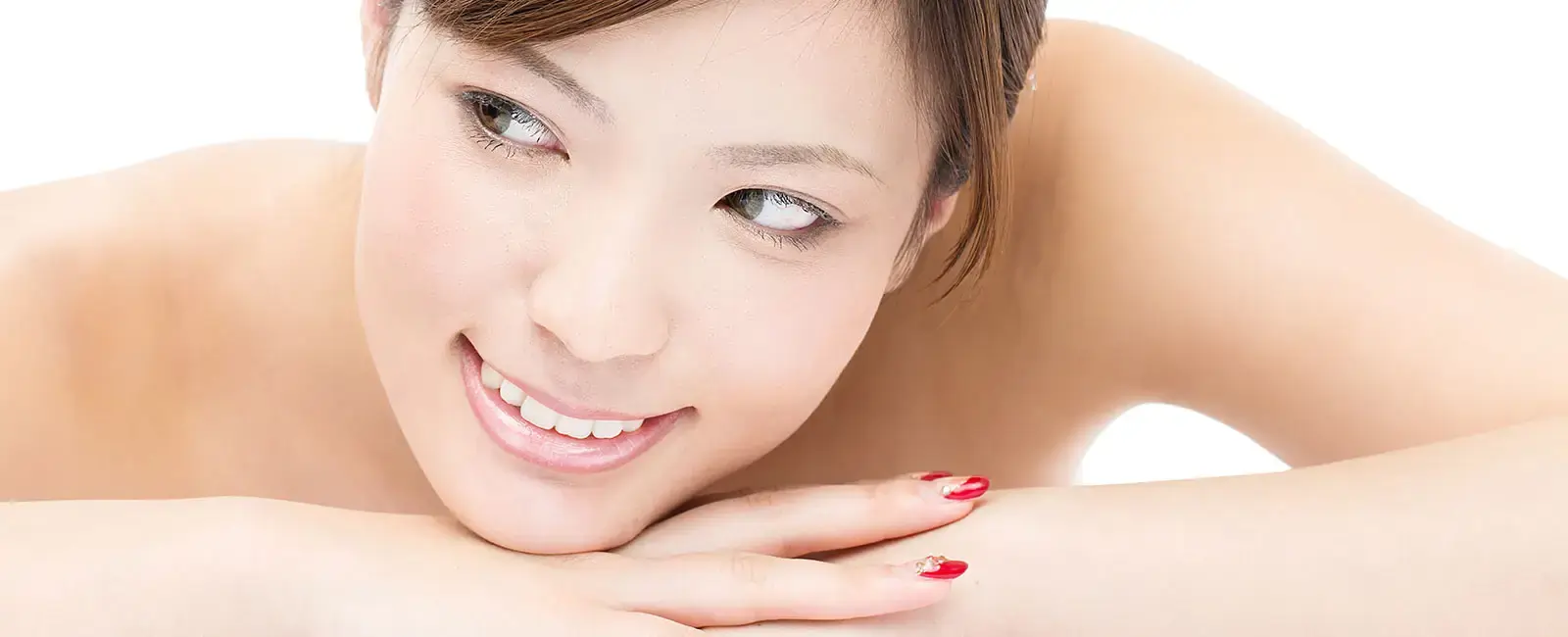Asian Double Eyelids
Asian eyelid surgery is one of the most requested cosmetic procedures in Hawaii, especially among patients of Japanese, Korean, Chinese, Filipino, Pacific Islander, and mixed ethnic backgrounds. While some patients seek a subtle crease that looks as if they were born with it, others prefer a more defined fold for added expression and brighter-looking eyes. At our Honolulu practice, Asian eyelid surgery is fully customized to match personal style, facial balance, and cultural identity—rather than forcing a “one-size-fits-all” crease.
Whether you have a monolid, low or uneven crease, or excess eyelid skin that hides the upper lid, this procedure creates a natural-looking fold without changing the shape of the eye. Both men and women request the surgery for aesthetic confidence, better symmetry, or even improved vision when drooping skin blocks the eyelashes.
What Is Asian Eyelid Surgery?
Asian eyelid surgery, also called double eyelid surgery, upper blepharoplasty, or eyelid crease creation, is a procedure that forms a visible fold in the upper eyelid. Some patients naturally have this crease (often called a “double eyelid”), while others have a smooth lid without a fold (“monolid”). Surgery creates the crease using either a suture-based technique or a small incision, depending on skin thickness, crease preference, and long-term stability goals.
Asian eyelid surgery is designed to enhance eye definition without erasing ethnic traits. The goal is not to Westernize the face. The focus is to create a crease that fits naturally within a person’s own anatomy. Results depend on brow height, lid platform show, eye angle, and lash shape.
Asian Eyelids Surgery Details
| Procedure Name | Asian Eyelid Surgery (Double Eyelid / Upper Blepharoplasty) |
| Surgeon | Dr. Michael A. Pasquale, DO – Board-Certified Plastic Surgeon |
| Anesthesia | Local anesthesia with optional sedation |
| Surgery Duration | 45–90 minutes depending on technique |
| Setting | Outpatient procedure — return home same day |
| Technique Options | Suture (non-incisional) or Incisional |
| Pain Level | Mild tightness or swelling for a few days |
| Downtime | Back to desk work in ~5–7 days |
| Stitches Removal | 5–7 days (if incisional) |
| Scarring | Hidden in crease — nearly invisible over time |
| Result Longevity | Permanent for incisional / 5–10+ years for suture method |
Asian Eyelids Surgery Before & After Photos
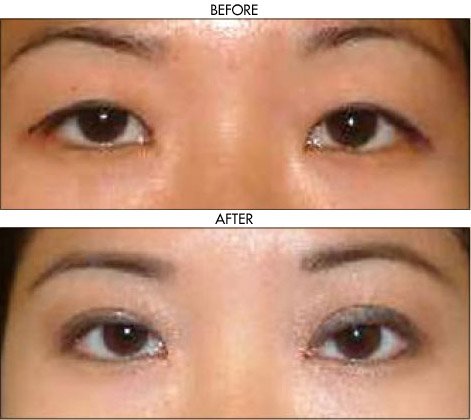
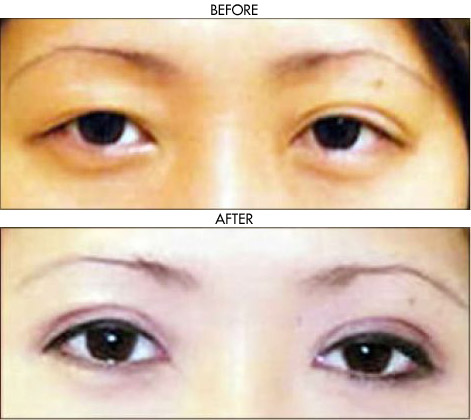
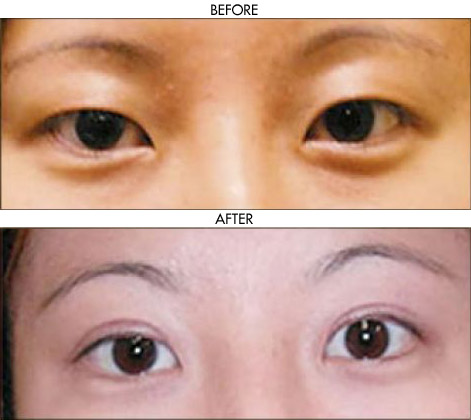
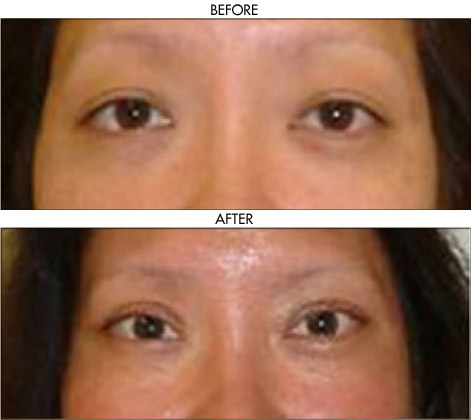
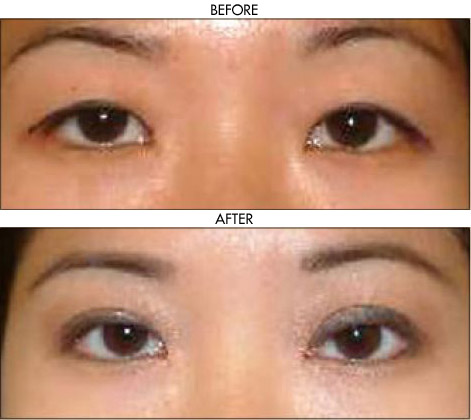
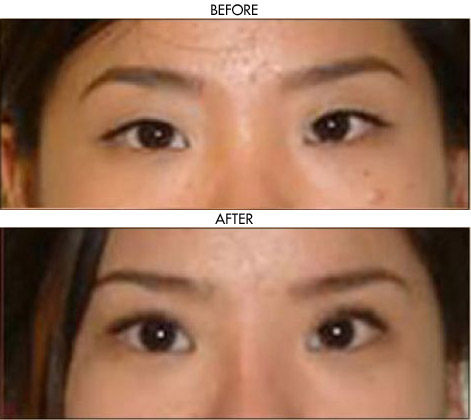
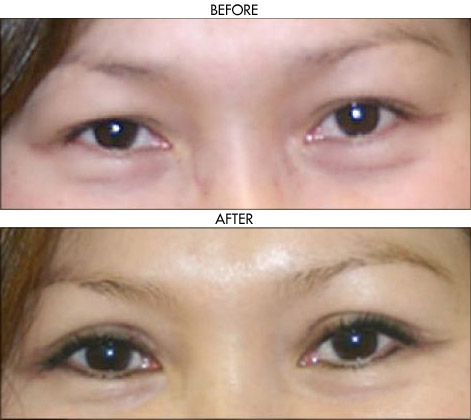
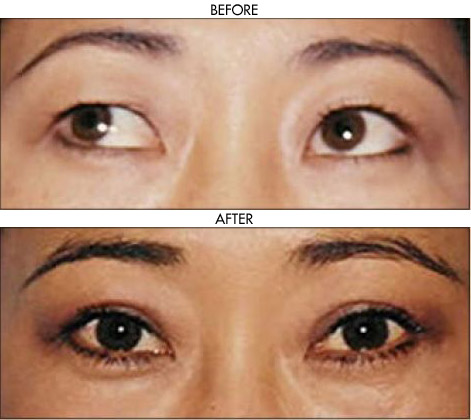
Facelift results are unique and specific to each patient. Your facelift results may vary.
Best Asian Eyelids Surgeon
Asian eyelid surgery at Infinity Life Center is performed by Dr. Michael A. Pasquale, a board-certified AAPS plastic surgeon trained at NYU with over 30 years of surgical experience in Hawaii. He has extensive experience operating on Japanese, Korean, Chinese, Filipino, Micronesian, and mixed-race patients, tailoring each technique to match natural eyelid anatomy.
Patients choose Dr. Pasquale for his precision and artistry in creating refined, balanced eyelid creases that look natural and preserve ethnic character.
Earlier in his career, Dr. Pasquale practiced alongside Dr. Robert Flowers, a pioneer of Asian aesthetic surgery whose innovations shaped many of today’s advanced double eyelid techniques.
Schedule a ConsultAsian Eyelid Risks
All eyelid surgeries involve some risk, including temporary swelling, bruising, asymmetry, or minor scarring. Infection and temporary numbness can also occur. Choosing an experienced double eyelid surgeon and following all pre- and post-operative instructions helps minimize complications and supports smooth healing.
Asian Eyelid Recovery
Most patients return to regular activities within one to two weeks. Swelling and tightness gradually subside over several weeks as the new crease settles. Closely following your surgeon’s recovery plan—including rest, incision care, and activity limits—helps ensure the best possible healing and natural results.
Asian Eyelid Results
Final eyelid crease definition becomes more visible over two to three months as swelling resolves. Patients enjoy brighter, more defined eyes that maintain a natural Asian aesthetic. With proper care, results are long-lasting and enhance facial balance for years to come.
Why Are Double Eyelids Considered Attractive?
A defined supratarsal crease allows more of the upper eyelid skin to fold back, revealing a larger portion of the eye. This increases the “eyeball exposure area,” which scientific imaging studies show makes the eyes appear more alert and youthful. People don’t consciously measure this — but our brains register open eyes as signs of energy, confidence, and engagement. Source: Photometric study showing increased eye openness after crease creation.
No Eyelids Least Favored
Researchers tested different crease heights on the same eyelid and asked both Asian and non-Asian viewers which looked best. Across the board, a moderate crease — not too high and not too low — was rated most attractive. Eyelids with no visible crease ranked the lowest, confirming that the appeal isn’t cultural pressure, but visual balance. Observer study showing medium crease height rated most attractive
Improved Symmetry and Balance
Many people naturally have one creased eyelid and one monolid. Creating a consistent fold improves eye-to-brow proportion and overall facial harmony. Facial symmetry is widely proven to be a key factor in attractiveness. Source: Research on facial symmetry and perceived attractiveness
Asian Eyelid Surgery Prices
At Infinity Life Center, double eyelid surgery in Honolulu typically ranges from $5,000 to $8,000 for upper eyelids and $6,000 to $10,000 for combined upper and lower procedures. Revision cases, which require greater precision and corrective work, may range from $7,000 to $14,000. Learn more about detailed costs and what’s included here – Double Eyelid Surgery Cost
Schedule a Consultation
Consultations allow a plastic surgeon to evaluate you and answer all the important questions that are impossible to answer otherwise, such as surgery options and surgery prices etc, All consultations are complementary and by appointment only.
Recovery from Asian Double Eyelids
Following the double eyelid surgery, the patient’s eyes do not typically require any bandage and only a application of antibiotic ointment. Iced cold gauze is placed and should be continued at home. Patients are advised to keep their head elevated. Medication and a cold compress may be used to relieve the discomfort. After two days a mild antiseptic solution will be used to clean the area, stitches are removed after five days.
This is not a big operation in most cases, healing is quick and patients are returned to normal activity in less than a week. We have done over a thousand of double eyelid crease cases on Japanese, Chinese and Koreans over the years. Hawaii population is 70% Asian so that is the standard here.
Double Eyelid Surgery FAQ
Double eyelid surgery creates a defined upper eyelid crease to make the eyes appear brighter and more contoured while preserving natural anatomy.
Healthy adults with a single eyelid, low or uneven crease, or hooding who want a natural crease and have realistic goals are candidates. Non-smokers heal more predictably.
Incisional removes skin or fat and creates a permanent crease. Non-incisional uses sutures without cutting for quicker recovery but a higher chance of loosening over time.
Thin skin with minimal fat often suits the suture method. Thicker skin, extra fat, or significant asymmetry favors the incisional method. Surgeon exam determines fit.
Surgeons mark several test heights, assess eyelid platform show, brow position, and levator strength, then select a height and shape that looks natural for your anatomy and goals.
The surgeon reviews goals, medical history, eyelid measurements, photos, crease simulation, risks, recovery, and pricing. You receive a personalized plan and aftercare outline.
Most procedures use local anesthesia with oral sedation. Some patients choose IV sedation. General anesthesia is uncommon unless combined with other procedures.
Typically 45 to 90 minutes per technique and complexity. Additional time is needed if combining ptosis repair or epicanthoplasty.
Swelling peaks at 48 to 72 hours and improves over 1 to 2 weeks. Most return to work in 5 to 7 days. Crease refinement continues for 6 to 12 weeks as swelling resolves.
Yes when crease height, shape, and fixation points match your anatomy. The goal is enhanced definition without changing intrinsic ethnic features or brow position.
Incisional results are designed to be permanent. Suture methods can last years but may relax with aging, rubbing, or significant weight change and can be retightened if needed.
Incisional scars sit within the new crease and fade to a fine line over months. Non-incisional methods leave pin-point entry marks that resolve quickly.
External sutures are usually removed at 5 to 7 days. Buried sutures from non-incisional methods dissolve on their own according to material used.
Yes. Fold height, fixation, and fat management can balance asymmetry. If eyelid droop is present, levator ptosis repair may be added for proper lift and symmetry.
Temporary swelling, bruising, dryness, or tightness are common. Less common risks include asymmetry, under or over-correction, infection, visible scarring, or crease loss with suture methods.
Contacts at 1 to 2 weeks once the surface is comfortable. Eye makeup at about 10 to 14 days. Use clean applicators and avoid pulling on the lids while healing.
Light walking is fine day one. Avoid strenuous activity and heavy lifting for 2 weeks to limit swelling and bruising. Gradually resume intensity after clearance from your surgeon.
Stop nicotine for at least 2 weeks before and after. Pause blood-thinning supplements and NSAIDs as directed. Arrange a ride home and prepare cold compresses and prescribed drops or ointment.
Elevate the head when resting, apply cold compresses for 48 hours, keep incisions clean and dry, use lubricating drops, and follow all medication and cleaning instructions precisely.
Non-incisional creases can often be adjusted or released. Incisional revisions are possible but require careful planning and adequate healing time before reoperation.
Epicanthoplasty softens the inner eye fold to lengthen the inner corner and reveal more lash line. It is optional and considered when patients want a longer inner eye aperture.
Cost depends on technique, surgeon expertise, facility, and add-on procedures like ptosis repair. Pricing typically ranges from the low to mid four figures before medications and follow-ups.
Vision is not targeted by this surgery. Temporary blurriness from ointment or swelling can occur during the first days and resolves as healing progresses.
Review high-volume eyelid surgeons, before and after photos, techniques offered, and revision rates. Confirm training, anesthesia safety, and a plan tailored to your anatomy and goals.
